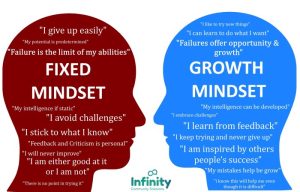Peer Support for Depression Finding Strength Together

Peer support for depression offers a powerful alternative or complement to traditional therapy. It leverages the shared experiences and understanding within a group setting, fostering connection and mutual support among individuals facing similar challenges. This approach recognizes the unique value of empathy and shared journey in navigating the complexities of depression, offering a sense of community and validation often missing in more formal therapeutic settings.
This exploration delves into the various models of peer support, examining their effectiveness, limitations, and integration with professional care. We’ll explore practical strategies for managing stress and anxiety within peer support groups, highlighting the role of mindfulness and resilience-building techniques. The discussion will also cover the importance of self-care, accessing relevant resources, and advocating for improved mental health services.
Defining Peer Support for Depression

Peer support for depression involves individuals with lived experience of depression providing emotional, informational, and practical support to others facing similar challenges. It operates on the principle of shared experience and mutual understanding, fostering a sense of community and reducing feelings of isolation often associated with depression.
Core Principles of Peer Support for Depression
Peer support for depression is grounded in several key principles. These include the belief in the inherent resilience and capacity for recovery within individuals, the power of shared experience to create connection and reduce stigma, and the importance of empowerment and self-determination in the recovery process. Mutual respect, empathy, and active listening are crucial components of effective peer support interactions.
The emphasis is on building a supportive relationship rather than providing professional therapeutic intervention.
Models of Peer Support Programs for Depression
Various models exist for delivering peer support for depression. These range from structured group programs with trained peer specialists to less formal, community-based initiatives. Some models focus on specific aspects of recovery, such as managing symptoms or improving social skills. Others take a more holistic approach, addressing multiple aspects of an individual’s well-being. Examples include structured support groups, online forums, buddy systems, and mentoring programs.
Benefits and Limitations of Peer Support Compared to Professional Therapy
Peer support offers several advantages over traditional therapy. It provides a sense of belonging and validation, reduces feelings of isolation, and offers practical advice and coping strategies from individuals who understand the challenges of depression firsthand. However, peer support is not a replacement for professional therapy. Peer supporters lack the formal training and qualifications of mental health professionals, limiting their ability to address complex or severe mental health issues.
Peer support can be particularly beneficial as a supplementary support alongside professional treatment, providing additional layers of social and emotional support.
Examples of Successful Peer Support Initiatives for Depression
Numerous successful peer support initiatives for depression exist globally. For instance, many mental health organizations offer peer support groups where individuals can connect with others and share their experiences. Online platforms and forums provide a space for connection and support, regardless of geographical location. Some initiatives focus on specific populations, such as young adults or those with comorbid conditions.
The success of these initiatives often hinges on factors such as trained facilitators, a supportive community environment, and clear guidelines and boundaries.
Comparison of Peer Support Models
| Model Name | Target Audience | Methods | Outcomes |
|---|---|---|---|
| Support Groups | Individuals with depression | Group meetings, facilitated discussions | Improved social support, reduced isolation, symptom management skills |
| Online Forums | Individuals with depression, geographically dispersed | Online discussions, message boards, peer-to-peer communication | Increased access to support, anonymity, 24/7 availability |
| Mentoring Programs | Individuals with depression, often newer to recovery | One-on-one support, guidance from experienced peers | Improved self-efficacy, increased coping skills, enhanced recovery trajectory |
| Buddy Systems | Individuals with depression, often paired with a trained peer supporter | Regular check-ins, shared activities, emotional support | Increased accountability, enhanced social connection, improved mood |
Stress and Anxiety Management in Peer Support

Peer support groups for depression often provide a safe space for individuals to share their experiences and learn coping strategies. However, the very nature of discussing difficult emotions can trigger stress and anxiety in both participants and facilitators. Understanding this interplay is crucial for creating effective and supportive environments.Stress, anxiety, and depression frequently co-occur, influencing and exacerbating one another.
Within a peer support setting, hearing others’ struggles can trigger empathetic distress, while the pressure to participate or offer support can heighten anxiety. Conversely, the shared experience and sense of community can also be powerful buffers against these negative emotions, promoting resilience and improved well-being.
Strategies for Managing Stress and Anxiety in Peer Support
Effective stress and anxiety management within peer support relies on a multi-faceted approach, encompassing both individual and group strategies. This involves creating a supportive atmosphere where open communication, active listening, and validation are prioritized. Providing participants with tools and techniques for self-regulation is equally important. Facilitators play a crucial role in modelling healthy coping mechanisms and ensuring the group environment remains safe and conducive to emotional well-being.
Mindfulness Techniques for Peer Support Sessions
Mindfulness practices, such as deep breathing exercises and body scans, can help participants regulate their emotional responses in the moment. A guided meditation, even a short one, can provide a sense of calm and focus. These techniques can be incorporated into peer support sessions as a brief break or as a structured activity, providing participants with tools to manage anxiety and stress both during and outside of meetings.
For example, a facilitator could guide the group through a simple breathing exercise at the beginning or end of each session, helping to create a sense of presence and grounding.
Incorporating Relaxation Exercises into Peer Support Meetings: A Step-by-Step Guide
- Introduction: Begin by explaining the benefits of relaxation exercises and briefly describe the chosen technique (e.g., progressive muscle relaxation).
- Guided Practice: Lead the group through the exercise step-by-step, using clear and calming instructions. Allow ample time for each step and encourage participants to focus on their physical sensations.
- Check-in: After the exercise, invite participants to share their experiences. This allows for a sense of shared experience and normalizes any difficulties.
- Practice outside the meeting: Encourage participants to practice the relaxation technique independently. Provide resources or written instructions to support home practice.
- Feedback and adjustments: Regularly evaluate the effectiveness of the relaxation exercises and adjust the approach based on participant feedback.
Coping Mechanisms for Stress and Anxiety in Peer Support, Peer support for depression
Providing participants with a range of coping mechanisms is vital. These should address both immediate stress responses and longer-term stress management.
- Deep breathing exercises: A simple and readily accessible technique for calming the nervous system.
- Progressive muscle relaxation: Systematically tensing and releasing muscle groups to reduce physical tension.
- Mindfulness meditation: Focusing on the present moment to reduce overthinking and worry.
- Journaling: Processing emotions and thoughts through writing.
- Spending time in nature: Connecting with the natural world can have a calming effect.
- Engaging in enjoyable activities: Participating in hobbies and activities that bring pleasure can reduce stress.
- Seeking professional support: Recognizing when additional support is needed and providing information on accessing professional help.
Depression Support Resources and their Integration into Peer Support: Peer Support For Depression
Effective management of depression often requires a multi-faceted approach, combining professional help with readily accessible support systems. Peer support plays a crucial role in this strategy, offering a sense of community and shared understanding that can significantly enhance recovery. Understanding and effectively integrating various resources into a comprehensive peer support program is vital for maximizing its impact.
Key Depression Support Resources
A range of resources exists to assist individuals experiencing depression. These include helplines offering immediate support and crisis intervention, online forums and communities providing a sense of connection and shared experience, and various mental health apps designed to track moods, provide coping mechanisms, and connect users with professionals. Additionally, many organizations offer educational materials, workshops, and support groups focused on managing depression.
The accessibility and variety of these resources allow for personalized support tailored to individual needs and preferences.
Integrating Resources into Peer Support Programs
Effective integration of these resources into peer support programs involves strategically incorporating them into the program’s structure and activities. For instance, peer support facilitators can educate participants about available helplines and online resources, providing direct links and contact information. They can also encourage the use of mental health apps as tools for self-monitoring and tracking progress. Facilitators can guide participants in navigating online communities, ensuring they find supportive and helpful environments.
Furthermore, peer support programs can collaborate with mental health organizations to offer joint workshops or integrate professionals into the program to provide brief educational sessions or Q&A sessions. This collaboration leverages the strengths of both peer and professional support.
Comparing Effectiveness of Support Resources
While peer support offers invaluable emotional validation and shared experience, professional help provides diagnosis, treatment plans, and medication management when necessary. Online communities can offer anonymity and convenience, but may lack the personalized attention and structured support of in-person groups. Helplines provide immediate crisis intervention, but may not offer long-term support. The effectiveness of each resource depends on individual needs and preferences; a combined approach often yields the best results.
For example, someone might find a helpline beneficial in a crisis, then transition to an online community for ongoing support, eventually incorporating in-person peer support and professional therapy.
Complementing Professional Help with Peer Support
Peer support serves as a valuable complement to professional help. It provides a safe space for individuals to share their experiences without judgment, fostering a sense of community and belonging that can enhance adherence to professional treatment plans. Peer support can also help bridge the gap between professional appointments, providing ongoing support and encouragement during challenging periods. For instance, a person undergoing therapy might find the shared experiences and practical coping strategies discussed in a peer support group helpful in managing symptoms between therapy sessions.
The combination of professional expertise and peer support creates a comprehensive and holistic approach to recovery.
Resource Guide for Depression Support
The following is a resource guide for individuals seeking support for depression, encompassing both peer and professional options:
- Helplines: Many countries offer national helplines (e.g., the Crisis Text Line in the US and Canada) providing immediate support and crisis intervention. These helplines are usually staffed by trained professionals who can offer immediate assistance and connect individuals with further resources.
- Online Communities and Forums: Numerous online platforms offer support groups and forums for individuals with depression. These can provide a sense of community and shared experience, but it’s important to choose reputable platforms with moderation to ensure a safe and supportive environment.
- Mental Health Apps: Several apps offer tools for tracking mood, providing coping strategies, and connecting users with professionals. Examples include Moodpath and Daylio.
- Peer Support Groups: These groups offer a safe space to share experiences, connect with others facing similar challenges, and learn from each other’s coping strategies. Many mental health organizations and community centers facilitate such groups.
- Therapists and Psychiatrists: Professional mental health providers can offer diagnosis, treatment plans, and medication management. They can provide personalized care tailored to individual needs.
- Support Organizations: Numerous organizations, such as the Depression and Bipolar Support Alliance (DBSA), offer educational materials, workshops, and support groups.
Mindfulness Practices in Peer Support for Depression
Mindfulness, the practice of paying attention to the present moment without judgment, offers a powerful tool for managing depression symptoms. By cultivating awareness of thoughts, feelings, and sensations, individuals can develop a greater sense of self-compassion and emotional regulation, reducing the intensity of depressive episodes and fostering resilience. Integrating mindfulness into peer support groups provides a supportive environment for learning and practicing these techniques, enhancing the overall effectiveness of the support provided.Mindfulness techniques are beneficial for individuals experiencing depression in several ways.
It helps to interrupt negative thought patterns and reduce rumination, a common characteristic of depression. By focusing on the present, individuals can detach from overwhelming negative thoughts and anxieties about the future or regrets about the past. Furthermore, mindfulness cultivates self-awareness, enabling individuals to recognize and understand their emotional responses without judgment, promoting emotional regulation and reducing emotional reactivity.
This increased self-awareness can also lead to a greater understanding of personal triggers and coping mechanisms. Finally, mindfulness fosters a sense of acceptance and self-compassion, counteracting the self-criticism and negativity often associated with depression.
Teaching and Practicing Mindfulness in Peer Support Groups
Mindfulness techniques can be effectively taught and practiced within a peer support group setting through a combination of education, guided exercises, and shared experiences. The facilitator plays a crucial role in creating a safe and supportive environment where members feel comfortable exploring their experiences and practicing mindfulness. Sessions might begin with a brief explanation of mindfulness principles and the benefits of practicing it.
This is followed by guided exercises, which are gradually introduced to build comfort and understanding. Group members are encouraged to share their experiences and insights, creating a sense of community and mutual support. The facilitator guides the group through discussions, ensuring all members feel heard and respected. Regular practice and encouragement are key to building consistent mindfulness skills within the group.
Examples of Mindfulness Exercises for Group Settings
Several mindfulness exercises are particularly well-suited for group settings. A simple body scan meditation, where participants systematically bring awareness to different parts of their body, can help ground individuals in the present moment and release physical tension. Mindful breathing exercises, focusing on the sensation of the breath entering and leaving the body, can calm the nervous system and reduce anxiety.
Mindful walking, paying attention to the sensations of the feet on the ground and the movement of the body, can be a grounding experience, especially beneficial for individuals who find it difficult to sit still for extended periods. Finally, guided imagery, where participants are guided to visualize calming scenes, can promote relaxation and reduce stress. These exercises can be adapted to suit the needs and preferences of the group members, with the facilitator offering variations and modifications as needed.
The Role of a Peer Support Facilitator in Guiding Mindfulness Practices
The peer support facilitator plays a vital role in successfully integrating mindfulness practices into group sessions. Their responsibilities include creating a safe and supportive environment, introducing mindfulness concepts clearly and concisely, guiding participants through exercises with a calm and reassuring voice, and facilitating discussions about experiences and challenges. The facilitator should be knowledgeable about mindfulness techniques and their application in managing mental health challenges.
They also need strong interpersonal skills to create a comfortable and trusting atmosphere for group members to share their experiences without judgment. The facilitator’s role is not to provide therapy, but rather to guide and support participants as they explore mindfulness practices and integrate them into their lives.
A Simple Guided Meditation Script for a Peer Support Group
Find a comfortable position, either sitting or lying down. Close your eyes gently. Bring your awareness to your breath, noticing the sensation of the air entering and leaving your nostrils. Feel the rise and fall of your chest or abdomen. Don’t try to change your breath, simply observe it. Notice any thoughts or feelings that arise, without judgment. Simply acknowledge them and gently return your attention to your breath. Now, imagine a peaceful place, a place where you feel safe and calm. It could be a beach, a forest, or any place that brings you a sense of peace. Visualize the details of this place, the sights, the sounds, the smells. Feel the peace and tranquility washing over you. Stay in this place for a few moments, allowing yourself to fully experience the sense of calm and relaxation. When you are ready, slowly bring your awareness back to your body, noticing the sensations of your body in contact with the chair or the floor. Gently wiggle your fingers and toes. Slowly open your eyes.
Ultimately, peer support for depression provides a valuable avenue for individuals to connect, learn, and heal. By fostering a sense of community, promoting self-care, and complementing professional treatment, peer support empowers individuals to navigate their journey with depression, building resilience and fostering a path towards recovery and well-being. The multifaceted nature of this approach underscores its potential to significantly impact the lives of those affected by this prevalent mental health condition.
Essential FAQs
What are the qualifications of a peer support leader?
Qualifications vary, but often include lived experience with depression, training in facilitation and communication skills, and adherence to ethical guidelines.
Is peer support a replacement for professional therapy?
No, peer support complements professional therapy. It’s not a substitute for diagnosis or treatment by a qualified mental health professional.
How do I find a peer support group?
Search online for local mental health organizations or support groups. Your doctor or therapist may also be able to provide referrals.
What if I feel uncomfortable in a peer support group?
It’s perfectly acceptable to leave a group if it doesn’t feel right. Finding the right fit is crucial for a positive experience.
Is peer support confidential?
Confidentiality is generally maintained, but it’s important to clarify the group’s specific policies regarding confidentiality.






